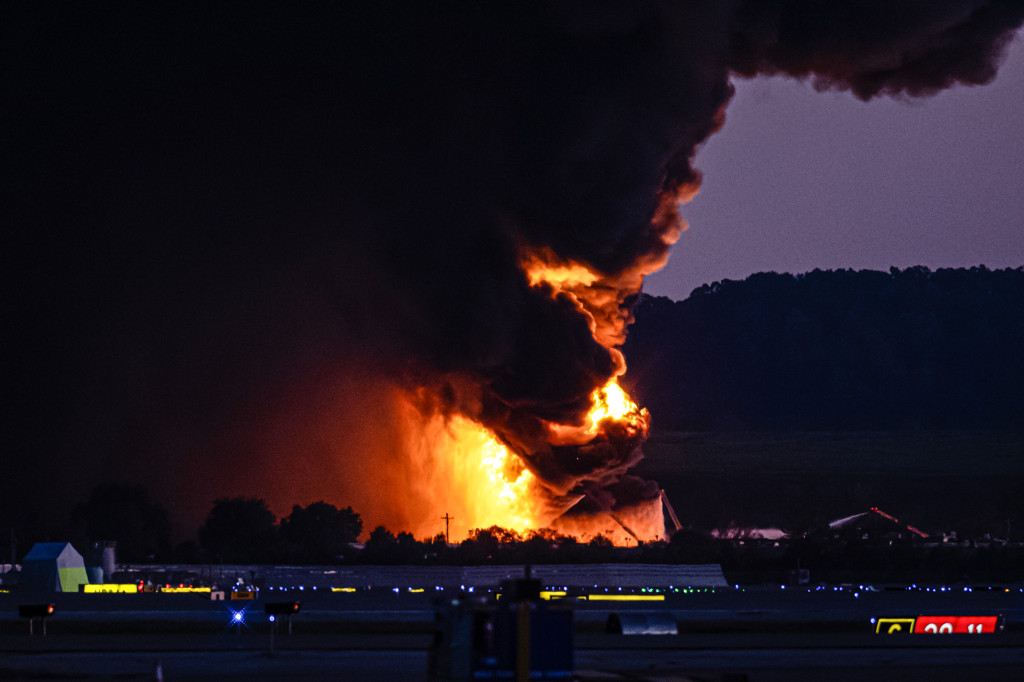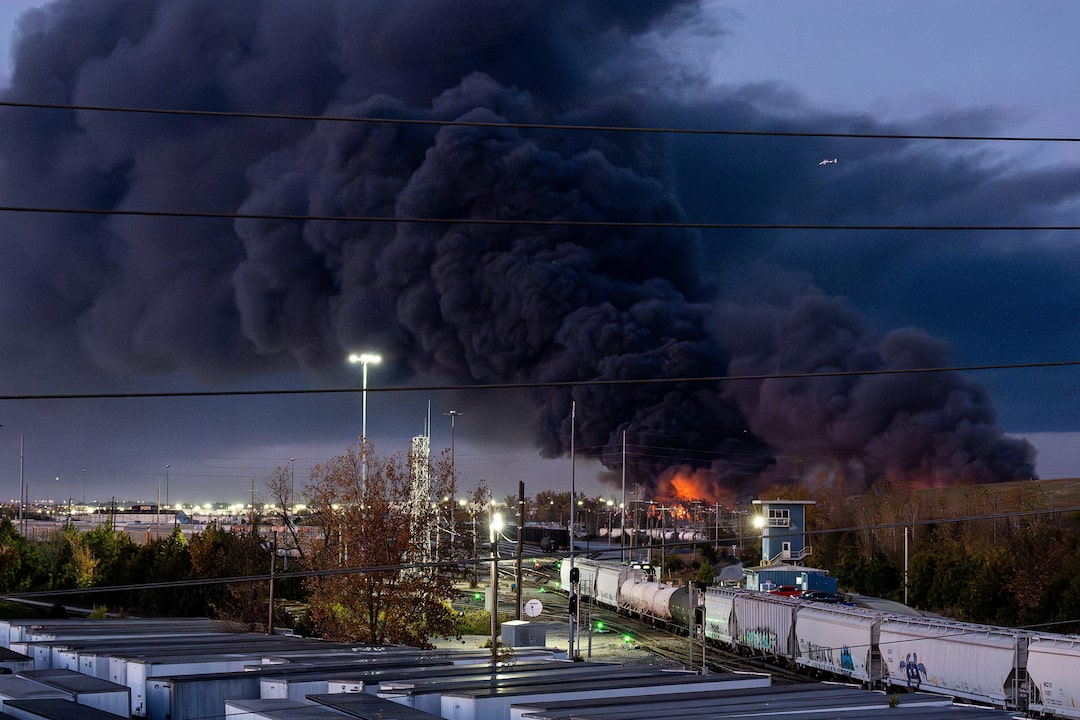UPS Plane Crash in Louisville: 9 Dead, 16 Missing in Fiery Takeoff Disaster
A UPS cargo plane crashed in a massive fireball moments after takeoff from Louisville's international airport Tuesday evening, killing at least nine people and leaving 16 others missing as emergency crews continue search operations in the wreckage-strewn industrial area.
The MD-11 freighter, carrying three crew members and bound for Honolulu, went down around 5:15 PM ET just south of Louisville Muhammad Ali International Airport, erupting into flames that spread to nearby businesses and forced the closure of the airport overnight. Kentucky Governor Andy Beshear confirmed the rising death toll and warned that the number could still increase as search teams comb through the debris.

How the Louisville Crash Unfolded: Inside the Fiery Takeoff
UPS Flight 2976 had just lifted off from the West Runway at Louisville Muhammad Ali International Airport when witnesses reported seeing flames on one of the aircraft's three engines. The McDonnell Douglas MD-11, loaded with approximately 38,000 gallons of fuel for its 8.5-hour journey to Hawaii, reached only 175 feet in altitude before making a sharp descent.
"We are terribly saddened by the accident tonight in Louisville," UPS said in an official statement. "Our heartfelt thoughts are with everyone involved." The company confirmed that all three crew members aboard the flight perished in the crash.
Video footage from the scene showed the aircraft partially engulfed in flames as it sped down the runway before the fireball erupted upon impact. The crash site, located about three miles south of the airfield, included a petroleum recycling business and an auto parts facility, where many of the ground casualties occurred.
Timeline: How the Louisville Plane Disaster Developed
The sequence of events began unfolding around 5:14 PM ET when the 34-year-old aircraft began its takeoff roll. Flight data from Flightradar24 shows the plane climbed briefly to 175 feet and reached a speed of 184 knots before the catastrophic descent.
Within minutes, emergency calls flooded dispatchers as the massive fire spread through the industrial corridor. Louisville Fire Chief Brian O'Neill reported that the plane's full fuel load of 38,000 gallons—weighing approximately 233,000 pounds—contributed to the intensity of the blaze that required more than 100 firefighters to contain.
By 11:00 PM, the fires were largely under control, but hot spots continued to burn through the night. The airport remained closed until Wednesday morning, when one runway reopened with multiple taxiways still blocked by debris.
Why the Louisville Crash Matters: Expert Analysis and Impact
Air safety expert and pilot John Cox told Reuters that investigators will need to determine why the three-engine aircraft failed to continue flying after one engine apparently caught fire. "That airplane should have flown on two engines," Cox said. "So now we've got to look at what caused it not to fly."
The crash marks the first fatal incident for UPS since August 2013, when an Airbus aircraft went down on approach to Birmingham, Alabama, killing both crew members. The MD-11 involved in Tuesday's crash had been in service with UPS since 2006 and was built in the early 1990s during the McDonnell Douglas era.
Boeing, which acquired the MD-11 program through its merger with McDonnell Douglas, said it would provide technical support to the investigation led by the National Transportation Safety Board.
Where Things Stand Now: Latest on the Louisville Crash
As of Wednesday morning, the death toll stands at nine with 15 people injured and transported to area hospitals. UofL Health reported that 13 patients have been discharged while two remain in critical condition in intensive care units.
Governor Beshear declared a state of emergency Wednesday morning, activating Kentucky National Guard resources and emergency management assistance. "This allows us to move resources more quickly through emergency management," Beshear explained, noting that the declaration will help ensure adequate funding for response and recovery efforts.
Authorities have reduced the shelter-in-place order to a quarter-mile radius around the crash site at 7501 Grade Lane, though residents in the immediate area have been advised to avoid drinking tap water until further testing can be completed.
What Happens Next: The Road Ahead for Louisville and UPS
The National Transportation Safety Board has taken charge of the investigation and is expected to conduct a thorough examination that typically takes 12 to 24 months to complete. Investigators will focus on why one engine appeared to separate from the aircraft before impact and the origin of the fire that engulfed the plane during takeoff.
UPS Worldport, the company's global air cargo hub and largest package-handling facility, halted operations Tuesday night and canceled Next Day Air services. The 5.2 million-square-foot facility normally processes up to 400,000 packages per hour and employs 20,000 UPS workers in the Louisville area.
Louisville Metro Council member Betsy Ruhe, whose district includes the airport, captured the community's sentiment: "This is a UPS town. We all know somebody who works at UPS, and they're all texting their friends, their family, trying to make sure everyone is safe. Sadly, some of those texts are probably going to go unanswered."
The Bottom Line: Key Points to Remember
The Louisville UPS plane crash represents one of the deadliest cargo aircraft incidents in recent years, with significant implications for aviation safety and the local community. As investigators begin their work and families await news of missing loved ones, the full scope of this tragedy continues to unfold. The combination of an aging aircraft design, full fuel load, and engine failure created the conditions for this catastrophic event that has left a community in mourning and raised urgent questions about cargo aircraft safety.


